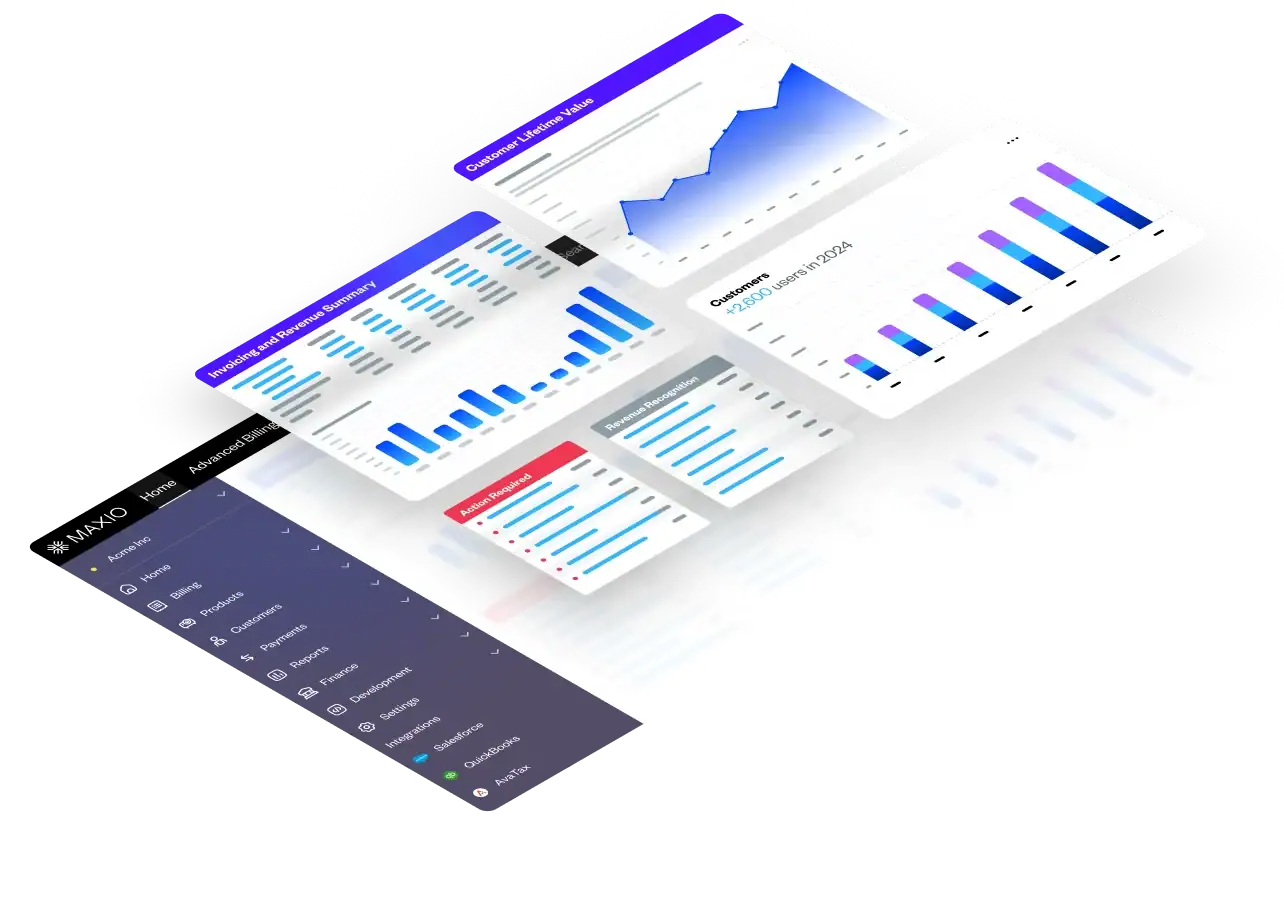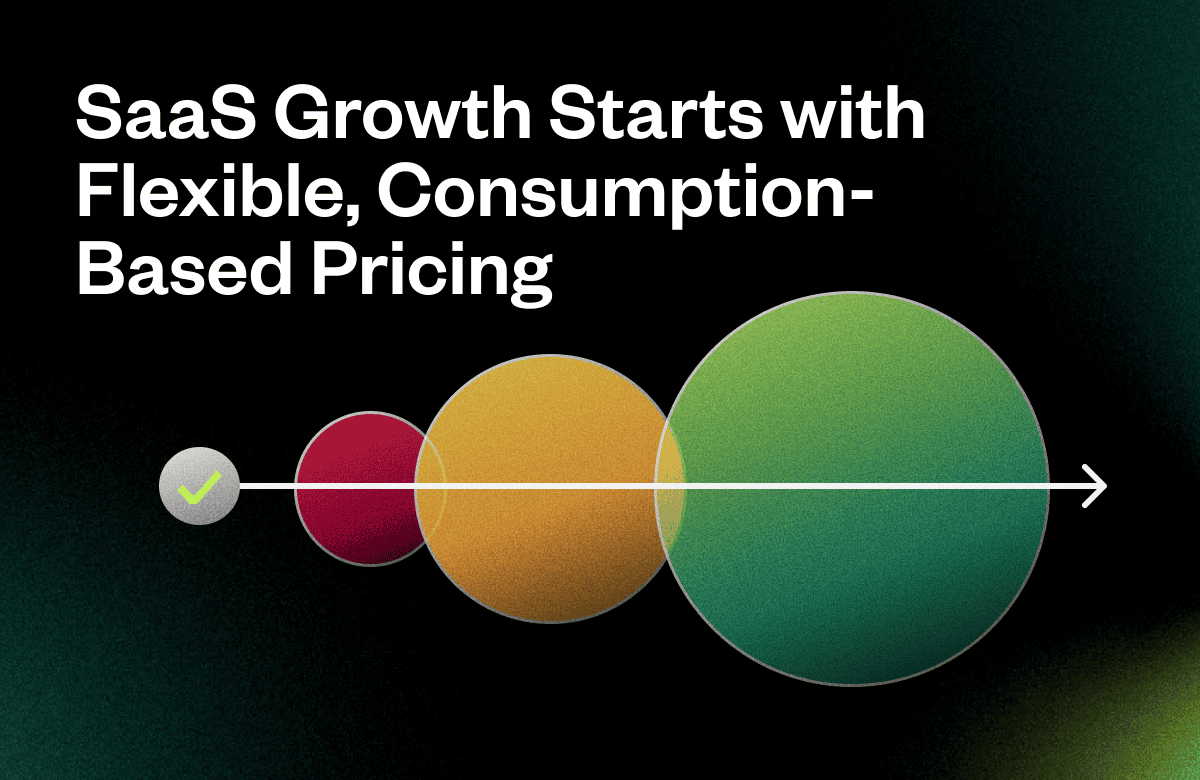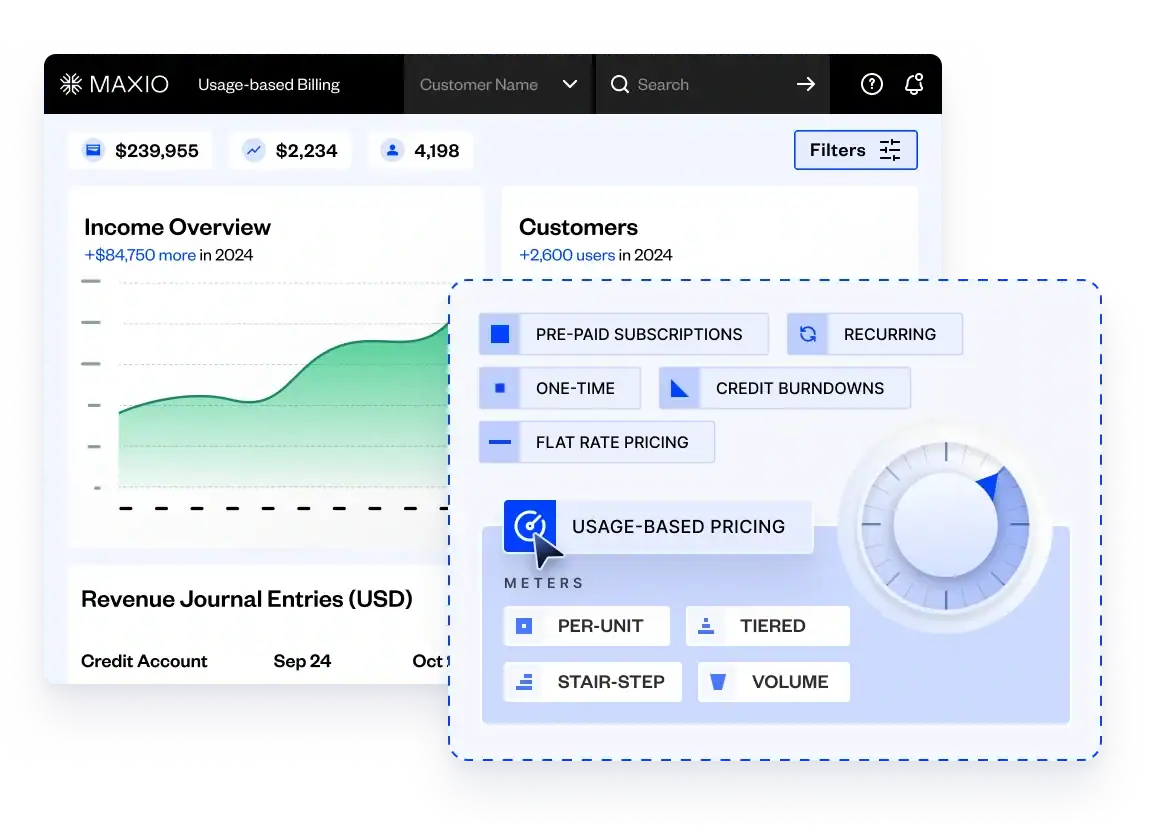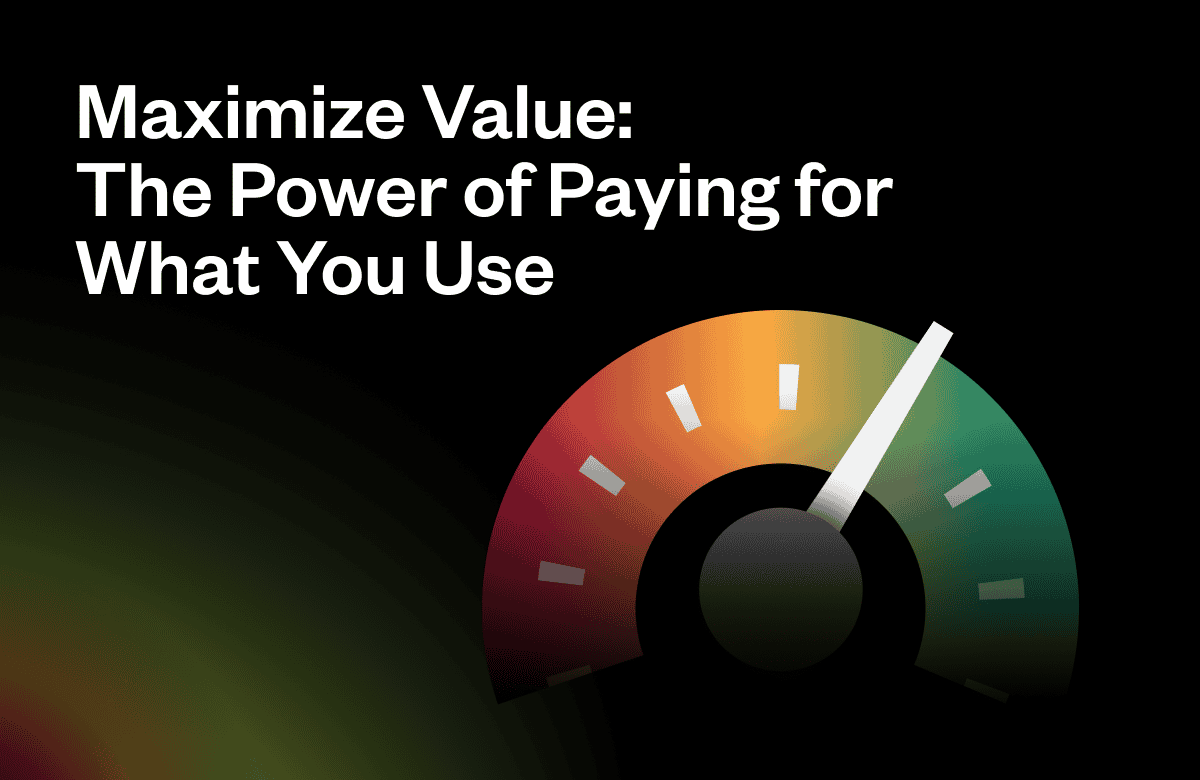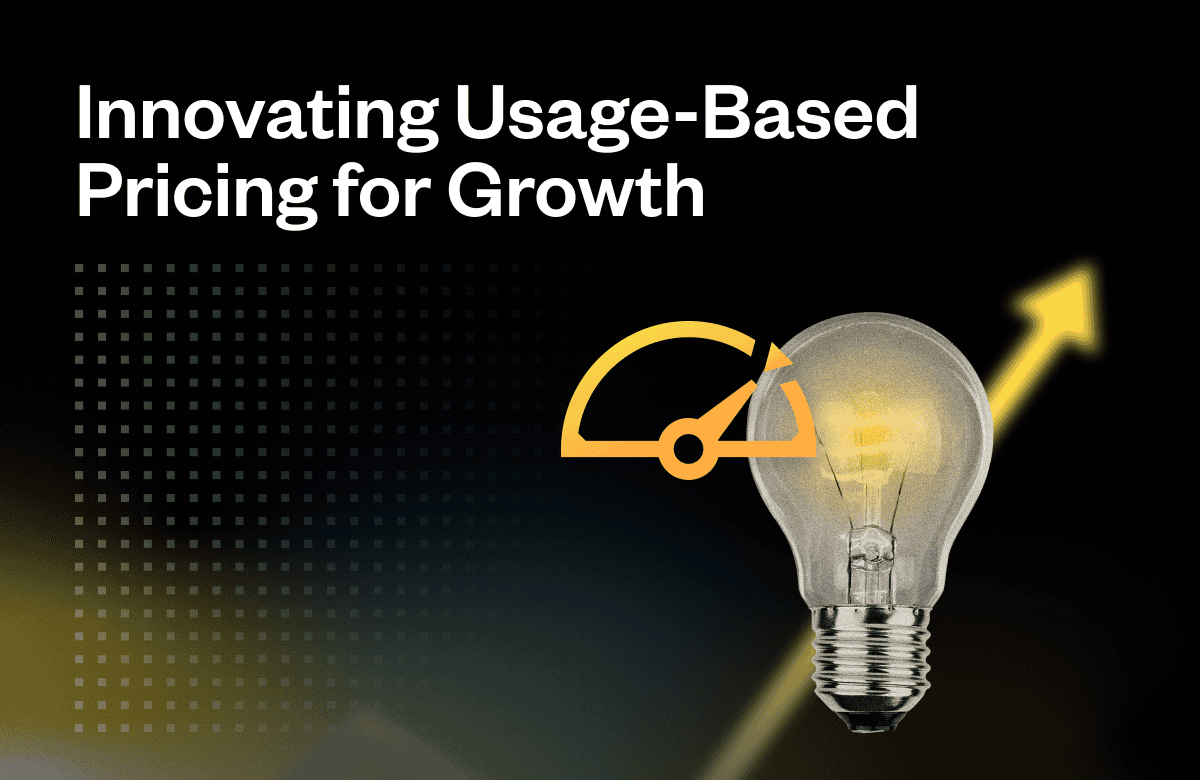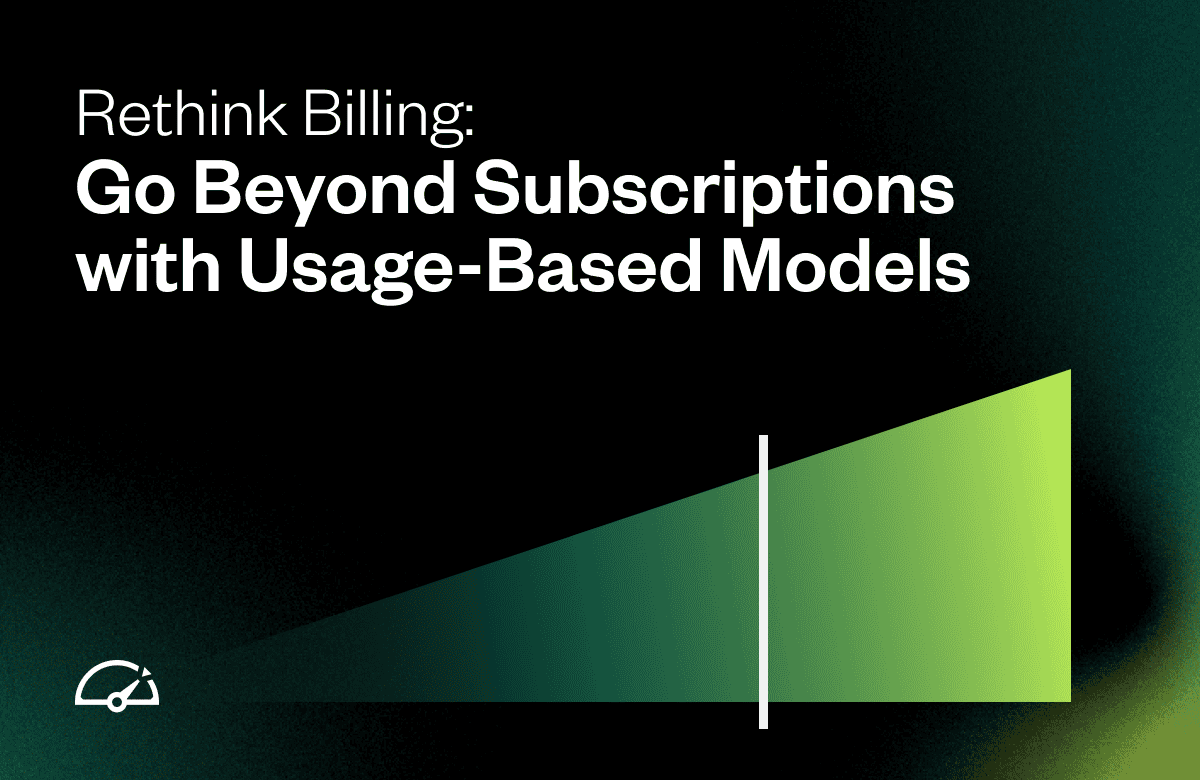Consumption-based pricing isn’t just having a moment—it’s cementing itself as a staple pricing model for SaaS businesses. The reason? Flexibility. Customers want to pay for what they use, and businesses want a pricing model that scales alongside customer growth. It’s a win-win.
Curious how you can successfully implement a consumption-based model in your business? We’ll be covering that and more, including SaaS businesses that are already successfully using this pricing model, variations of consumption-based billing, and the pros and cons you should expect.
What is consumption-based billing (aka usage-based billing)?
Consumption-based billing, also known as usage-based billing, is a pricing strategy that directly links a customer’s payment to how much of a product or service they use.
Under a consumption-based pricing model, customers pay only for the resources or services they actually consume, whether it’s API calls, storage, bandwidth, or user activity. This usage-based model not only aligns the cost of software to the value customers receive, but it also provides SaaS businesses with recurring revenue streams that grow organically with customer adoption.
For example, a SaaS platform with variable customer demands can better capture revenue during periods of high usage while dynamically adjusting their prices during periods of low usage.
Examples of consumption-based billing models
Consumption-based pricing strategies have gained significant traction across various industries. According to Maxio’s 2025 pricing trends report, 67% of SaaS companies now leverage usage and consumption-based pricing—a significant increase from just 52% in 2022.

Usage-based pricing utilization statistics from the Maxio’s 2025 pricing trends report (Source)
Here are just a few notable examples of SaaS companies that are seeing great success by monetizing their customers’ usage data:
1. Amazon Web Services (AWS)
Cloud Computing and Cloud Services giants like AWS (Amazon Web Services) have pioneered consumption-based billing by charging customers for the exact resources they use, such as storage, computing power, or bandwidth.
This flexible, pay-as-you-go approach allows businesses to scale their operations efficiently without incurring upfront costs. For instance, a SaaS company can adjust expenses based on fluctuating user traffic, making AWS a cost-effective solution for businesses of all sizes.
And beyond consumption-based pricing, AWS offers additional cost-saving incentives like:
- Volume-based discounts: Costs decrease as usage increases, rewarding high-growth businesses with lower rates for exceeding thresholds, such as API calls or data processing.
- Commitment discounts: Long-term plans like Savings Plans and Reserved Instances provide significant discounts for customers with predictable workloads.
- Free tier for new users: Up to 1 million API calls per month for 12 months, allowing startups to test and scale without upfront investment.
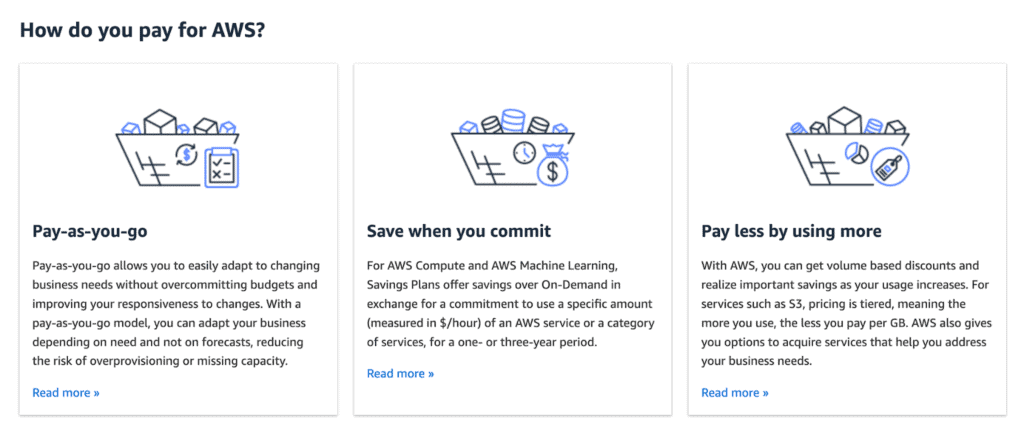
An explainer of AWS pricing options, including pay-as-you-go pricing, commitment incentives, and volume-based discounts (Source)
2. Snowflake
The data storage company, Snowflake, charges customers based on two main components:
- Compute usage, which covers the processing power needed for queries
- Storage usage, which charges for the volume of data stored
Snowflake’s approach ensures businesses only pay for the resources they consume, making it an ideal solution for companies that want to scale sustainably and get maximum ROI from their tech investments.
But beyond its consumption-based pricing model, Snowflake also offers additional cost-saving features, such as:
- Pre-purchased capacity discounts: For organizations with steady data processing requirements, Snowflake provides Capacity Plans, which offer discounted rates when customers commit to a specific usage level over time.
- Credits for scaling: Snowflake’s pricing structure is designed to optimize costs by charging compute credits only when virtual warehouses are actively running queries. Businesses can pause or scale resources as needed to ensure they don’t pay for any idle compute power.
3. Algolia
Algolia offers an API for search and discovery, charging customers based on the number of search requests (API calls) made by their users. Its tiered consumption-based pricing ensures businesses can start small and scale as their search needs grow. For example, an online marketplace integrating Algolia for product search would only pay for the actual search queries performed by users.
But similar to AWS and Snowflake, Algolia offers additional pricing incentives, including:
- Indexed data scaling: Algolia’s pricing also factors in the amount of data indexed, which directly impacts search performance and relevance. Companies can manage costs by optimizing their index structure while delivering high-quality search results.
- Tiered discounts for high usage: Larger-scale customers benefit from volume discounts as usage grows. The more API calls or indexed records and business processes, the lower the cost per unit—a perfect incentive for companies experiencing rapid growth.
In all these scenarios, the only way to manage these consumption-based models alongside their numerous add-ons and discounts would be to handle them through a dedicated usage-based billing software. Unfortunately, as SaaS businesses scale and enter mid-market, there’s underlying pressure to jump straight to an enterprise solution to handle these billing challenges.
Maxio was our answer to that problem.
Not ready to graduate to an enterprise solution? Check out Maxio’s usage-based pricing page to learn more.
The benefits of consumption-based billing
Charging a flat rate is the quickest way to sort out your pricing. However, it also means your power users will be able to get more value out of your SaaS than the price they are paying, while your new adopters will struggle to justify the cost of your SaaS.
Implementing consumption-based billing will allow you to cater to all of your customers needs, regardless of their usage levels. Here are some of the other ways implementing a consumption-based pricing model can benefit your business.
Greater scalability
One of the most significant benefits of consumption-based billing is the ability to scale your operations. As your customer usage grows and revenue increases, you’ll have more resources on hand to expand your operations without needing to make frequent pricing adjustments. And with billing tools like Maxio, you can automate the entire process—tracking real-time usage, applying appropriate pricing models, and generating accurate invoices in one end-to-end workflow.
Enhanced forecasting
By leveraging real-time usage metrics, SaaS companies using consumption-based billing can improve their forecasting capabilities. And unlike flat-rate models, which rely on static revenue projections, a consumption-based approach provides a dynamic view of revenue trends based on actual customer usage and behavior.
For Maxio users, this is a simple as leveraging the platform’s metrics and reporting tools to create custom forecasting dashboards—whether you want to forecast revenue projections from consumption billing, check the profitability of specific customer cohorts, or review your days sales outstanding (DSO) across specific regions.
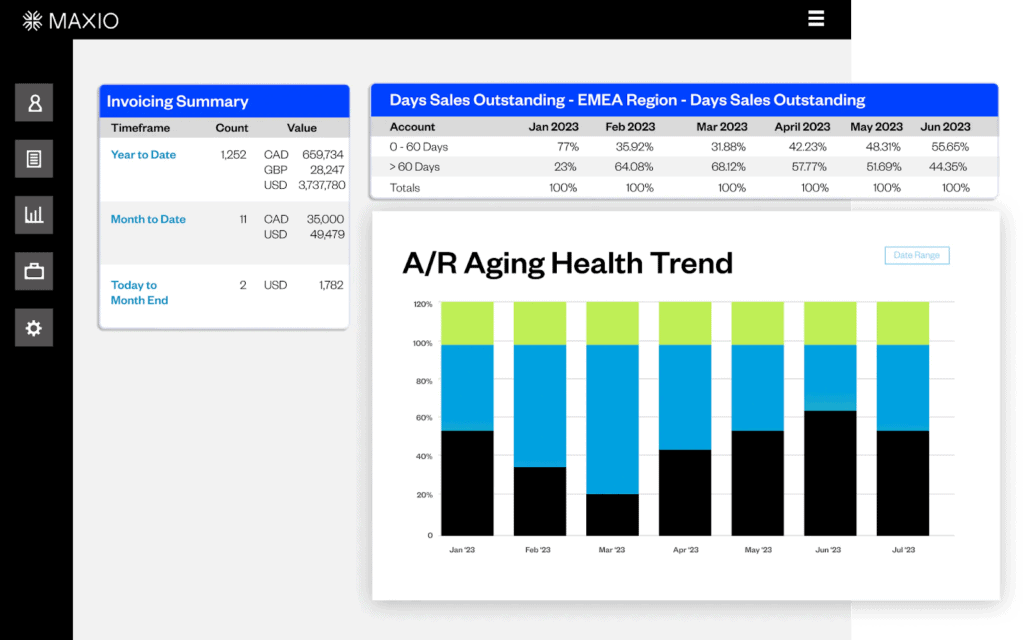
A hypothetical A/R aging health trend dashboard created in Maxio (Source)
Increased customer satisfaction
Your customers don’t want to pay for anything that won’t benefit them. What they really want is pricing that aligns with their needs, and that’s exactly what consumption-based billing delivers.
By charging based on actual customer needs and usage, a consumption-based model fosters trust and transparency, creating a pricing structure that feels fair and tailored to your customers’ needs. Additionally, the flexibility of this model attracts new customers who may have been hesitant to commit to rigid, all-inclusive plans.
Challenges of consumption-based billing
While consumption-based billing offers numerous benefits, it also introduces unique challenges that SaaS businesses must address to implement this model effectively. From the complexity of managing a billing system to adapting to fluctuating customer usage patterns, overcoming these hurdles is essential to create a seamless and transparent billing experience.
Here are just a few of the challenges you should take into account before implementing consumption-based billing:
Complexity in billing automation
A major challenge of consumption-based billing is the sheer complexity of managing a billing system that relies on real-time data. SaaS businesses need accurate real-time metering to track customer usage, apply appropriate rates, and generate invoices without manual intervention. Without the right tools, this process can become cumbersome and prone to errors.
Managing overage charges
Another common issue with consumption-based billing is managing overage charges. Charging customers for exceeding their usage limits can lead to confusion and disputes if not handled transparently.
Fluctuating customer usage patterns
Finally, fluctuating customer usage patterns can create challenges in forecasting revenue and maintaining operational stability. Sudden spikes or drops in usage can make it difficult to predict income or allocate budgets and resources effectively.
Types of consumption pricing models
It’s difficult to find any business that offers a ‘standard’ consumption-based pricing plan. Instead, the reason this model works so well is that it offers businesses the flexibility to choose from a variety of pricing structures that align with their goals and customer needs.
Each model provides its own unique advantage and caters to different use cases and industries. Here are the most common types of consumption pricing models and how they work.
Pay-as-you-go model
The pay-as-you-go model is one of the simplest and most popular consumption-based pricing structures. In fact, it’s what most people will think of when asked about consumption or usage-based pricing.
Under a pay-as-you-go agreement, customers are billed based on their actual usage, whether it’s the number of API calls, gigabytes of storage, or hours of service consumed. This model is commonly used in cloud services like AWS, where businesses only pay for the resources they need. Pay-as-you-go pricing is ideal for customers who value flexibility and prefer avoiding upfront commitments or overpayment.
Volume-based discounts
In a volume-based model, pricing changes based on the total amount of a service consumed.
In other words, the more a customer uses, the lower the per-unit cost, offering an incentive for customers to scale their usage over time. This approach is typically seen in industries like telecommunications, where customers benefit from different pricing levels as they increase their data or call volume. That being said, volume-based models are also effective for SaaS companies that want to encourage larger commitments from their users and monetize their existing customer base.
Usage-based tiers
Consumption and tier-based pricing can be combined so that your customer usage levels are divided into specific tiers, each with their own defined price.
Under this mixed tiered pricing model, customers select the tier that best matches their expected usage, and pay a flat rate for everything within that range. For example, a SaaS app might charge $50 for up to 1,000 users and $100 for up to 5,000 users. Then, they would also have custom usage-based pricing layered on top for the customers within those defined tiers.
Hybrid model
Not all of your pricing options will perfectly align to the needs of your users. In this case, you may consider opting for a hybrid model that combines elements of different pricing structures to meet the needs of various customers across your user base.
For instance, a business might use tiered pricing for basic features but add a pay-as-you-go component for premium services. This approach is especially common in SaaS, where flexibility and customization become table stakes as businesses begin to scale.
At Maxio, we use this model in our own pricing by giving users access to free trials, sales-negotiated plans, flare-rates, add-ons, and custom pricing to their needs.
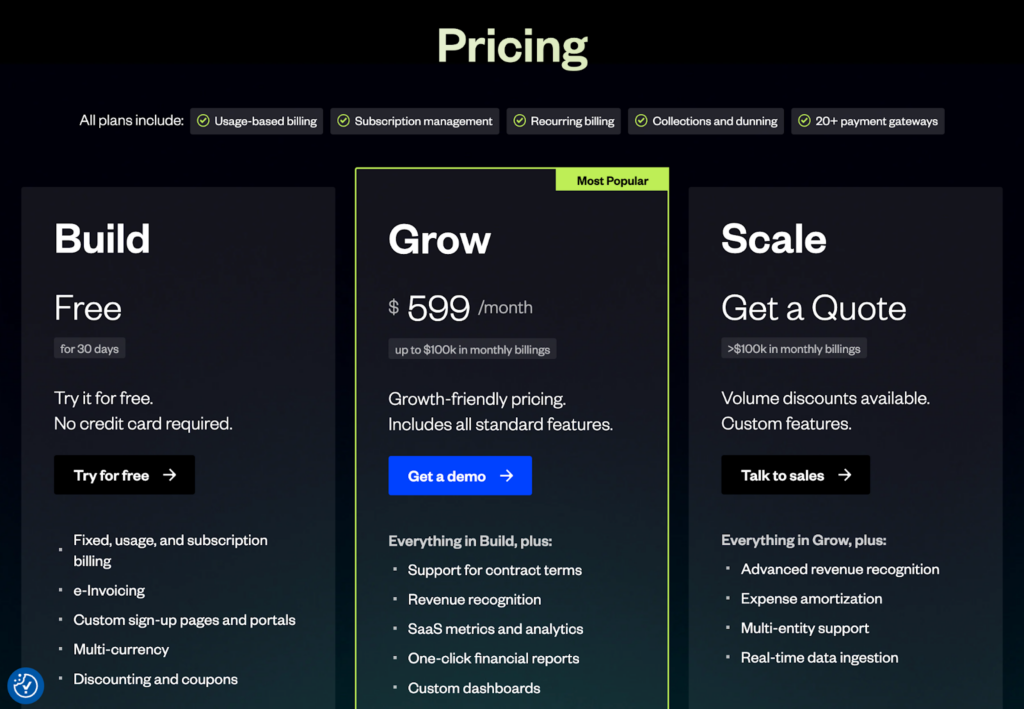
Best practices for implementing consumption models in SaaS companies
Implementing a successful consumption-based pricing strategy requires careful planning and the right tools to support your subscription models.
From crafting customer-focused pricing plans to automating the billing process, SaaS companies can both maximize their revenue and enhance the customer experience by implementing a consumption-based model. These SaaS billing best practices will help you navigate the transition to subscription-based pricing and optimize the billing process in your own company .
Build a customer-centric pricing strategy
Understanding your customer needs is essential for designing effective pricing plans. Plain and simple. A customer-centric approach ensures that your consumption-based model aligns with how users interact with your product. And by offering flexible pricing plans tailored to different usage levels, you can attract a broader range of customers while maintaining transparency and trust.
Automate the billing process
A consumption-based model relies on the ability to accurately track and meter usage-data in real-time in order to work. But with dedicated subscription billing software like Maxio, you can automate every aspect of your billing process—from metering usage to generating invoices. This not only reduces errors in your billing process but also allows you to scale without the administrative burden of manual billing.
Foster transparency with real-Time dashboards
Transparency builds trust—and giving your customers access to real-time dashboards on their product usage is one of the easiest ways to achieve it. That’s exactly why Maxio includes dashboards that track customer usage, giving them a clear view of their consumption and helping you maintain open communication on exactly what they’re paying for during each and every billing period.
Track customer usage levels to predict revenue streams
Monitoring your customers’ usage levels provides invaluable insights into their behavior and makes it easier to predict future revenues from consumption-based pricing.
By analyzing this data, SaaS companies can anticipate future growth opportunities and plan for fluctuations in demand based on their historical customer usage data. And with Maxio’s real-time tracking tools, SaaS businesses can easily collect, analyze, and share their customers’ usage data internally to plan for future growth.
Upsell with usage-based pricing plans
Upselling is a natural fit for usage-based pricing models. By analyzing customer usage patterns, SaaS companies can identify users who are ready to scale up and offer tailored pricing plans that meet their evolving needs.
You can choose to do this manually by informing your customer success team or sales rep when customers are ready for an upgrade, or, you can use a tool like Maxio to automate the process and offer usage-based plans to your customers based on your own custom signals.
Monitor churn and retention metrics
Your churn and retention metrics are vital to understanding the long-term success of a consumption-based model. If a consumption-based model ultimately isn’t a good fit for your users, the data will show it. And with Maxio’s advanced analytics tools, you can track these metrics, and gain actionable insights to improve your customer retention if you begin to see the warning signs of customer churn.
Transform your billing with consumption-based subscription billing software
Without the right tools, it’s nearly impossible to accurately track, meter, and charge customers based on their product usage or consumption. However, with dedicated tools like Maxio, you can easily set up and launch a consumption-based billing model in no time.Want to implement a consumption-based model in your business? Check out our Guide to Adopting Usage-Based Pricing in SaaS to learn more.
